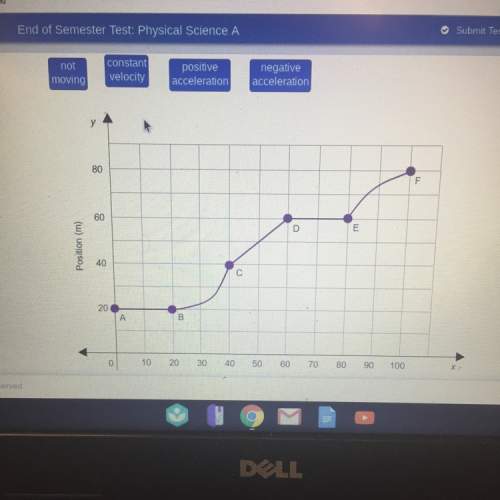
Physics, 03.12.2020 01:00 andrewmena05
Please help fill in the blank Earth’s axis passes through the (blank) and south poles.

Answers: 1


Another question on Physics

Physics, 21.06.2019 22:50
A23 kg log of wood begins from rest, 300 m up a sluice (a water track used to transport logs, think of it as an inclined plane with negligible friction) inclined at 20° to the horizontal. after it reaches the flat waterway at the bottom it collides elastically with a 100 kg block of wood initially at rest near the base of the incline. (a) how long does it take the 23 kg log to travel down the incline? (b) what is the speed of the 23 kg log at the bottom of the incline? (c) what are the velocities of both blocks of wood after the collision? (d) what is the total kinetic energy before the collision? (e) what is the kinetic energy of the 23 kg log after the collision? (f) what is the kinetic energy of the 100 kg block of wood after the collision? (g) what is the total kinetic energy after the collision? (h) compare the total initial and total final kinetic energies. is this consistent with what you would expect for elastic collisions? explain!
Answers: 1

Physics, 22.06.2019 03:00
An equinox occurs when a. neither end of earth's axis is tilted toward or away from the sun. b. the north end of earth's axis is tilted away from the sun. c. the north end of earth's axis is tilted toward the sun. d. earth's axis is parallel to the sun's rays. select the best answer from the choices provided a b c d
Answers: 1

Physics, 22.06.2019 11:20
If the radius of curvature of the cornea is 0.75 cm when the eye is focusing on an object 36.0 cm from the cornea vertex and the indexes of refraction are as described before, what is the distance from the cornea vertex to the retina? express your answer to two significant
Answers: 3

Physics, 22.06.2019 16:50
Abird flies directly overhead from where you stand at an altitude of 300.0 m and at a speed horizontal to the ground of 20.0 m/s. the bird has a mass of 2.0 kg. the radius vector to the bird makes an angle \thetaθ with respect to the ground. the radius vector to the bird and its momentum vector lie in the xyxy-plane. what is the bird’s angular momentum about the point where you are standing?
Answers: 2
You know the right answer?
Please help fill in the blank Earth’s axis passes through the (blank) and south poles....
Questions

English, 28.09.2019 20:00

Physics, 28.09.2019 20:00

Biology, 28.09.2019 20:00

English, 28.09.2019 20:00

English, 28.09.2019 20:00

Computers and Technology, 28.09.2019 20:00


History, 28.09.2019 20:00

History, 28.09.2019 20:00

Mathematics, 28.09.2019 20:00


Mathematics, 28.09.2019 20:00


History, 28.09.2019 20:00

Mathematics, 28.09.2019 20:00

Chemistry, 28.09.2019 20:00


Mathematics, 28.09.2019 20:00

Computers and Technology, 28.09.2019 20:00





